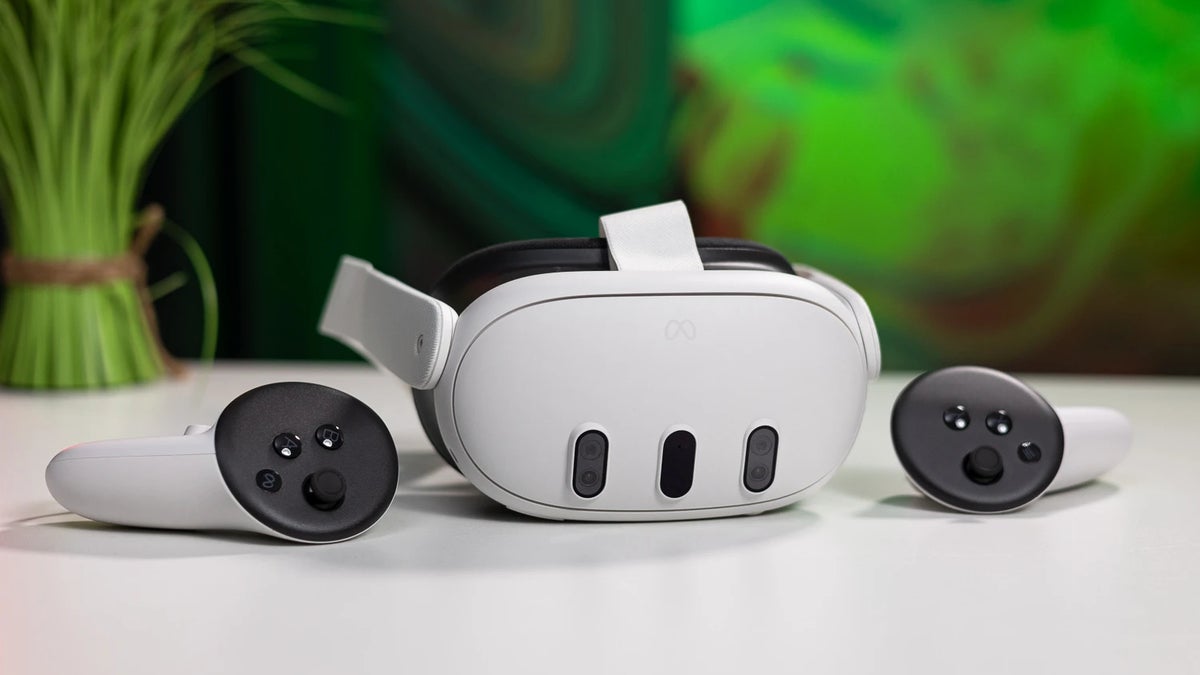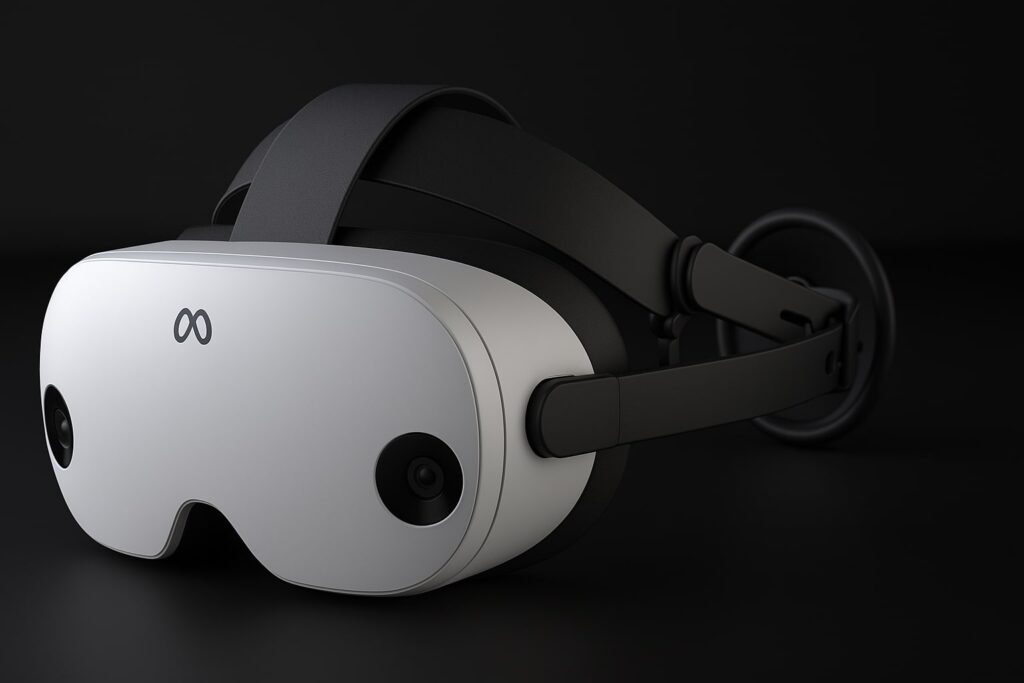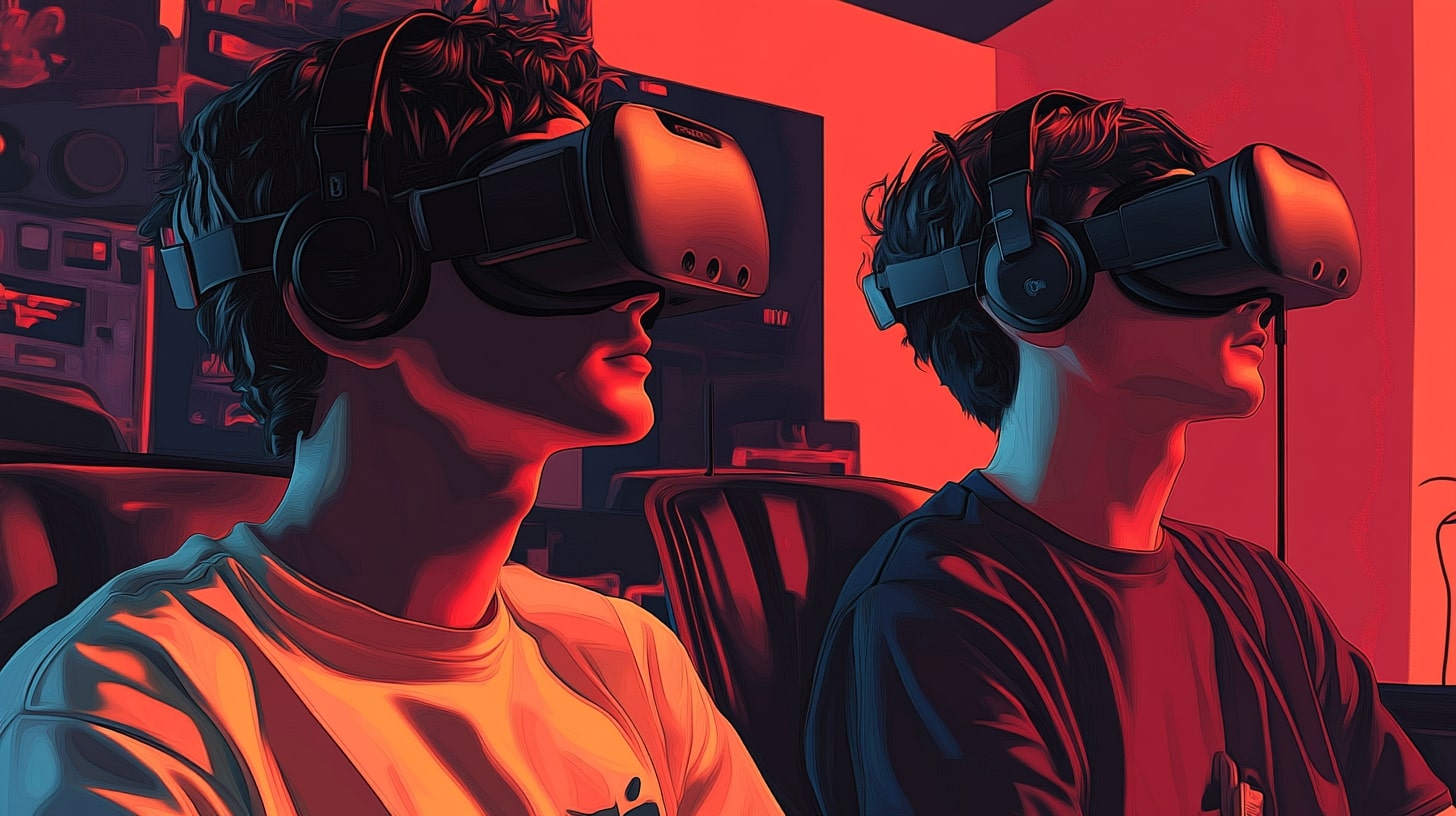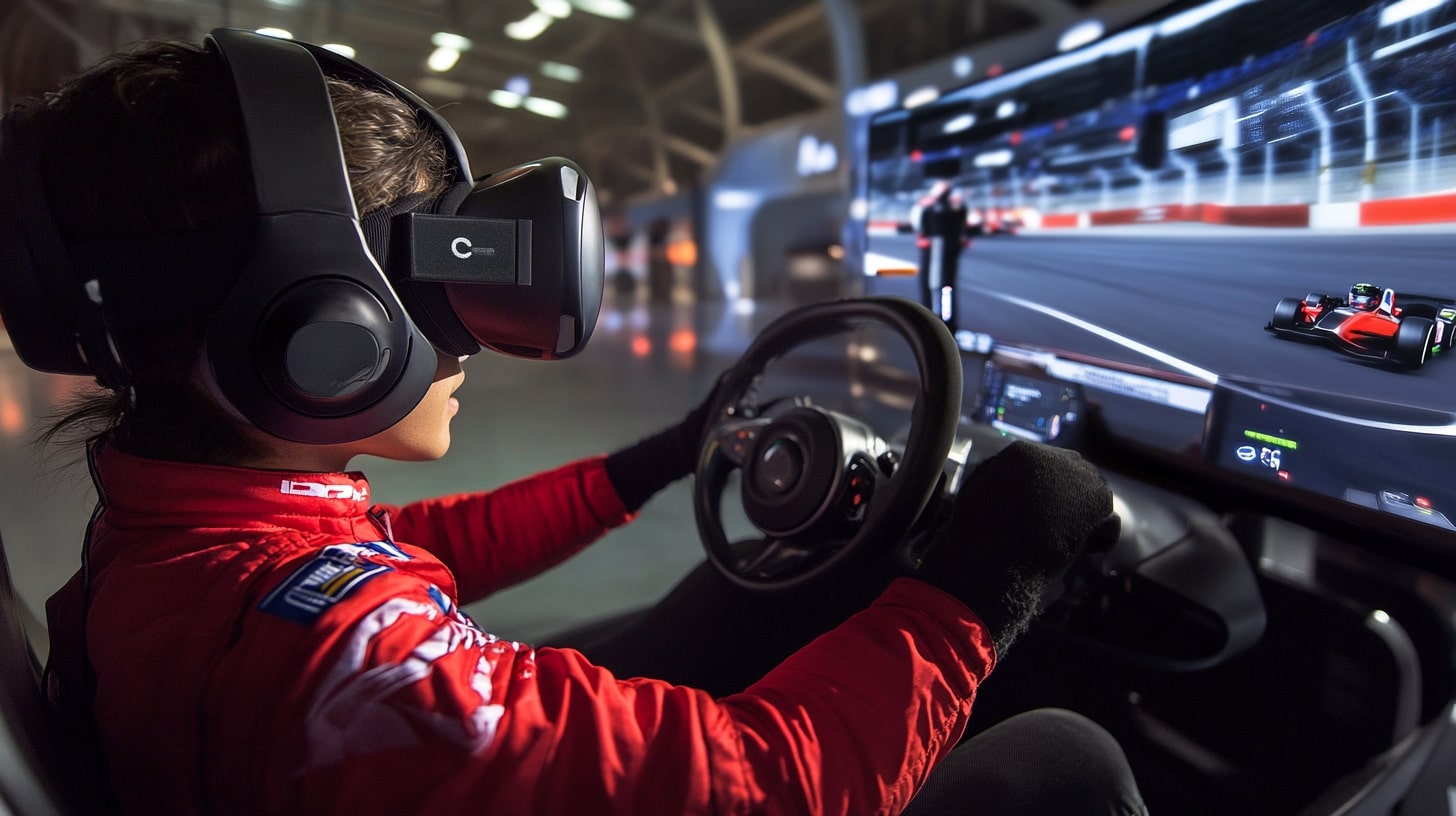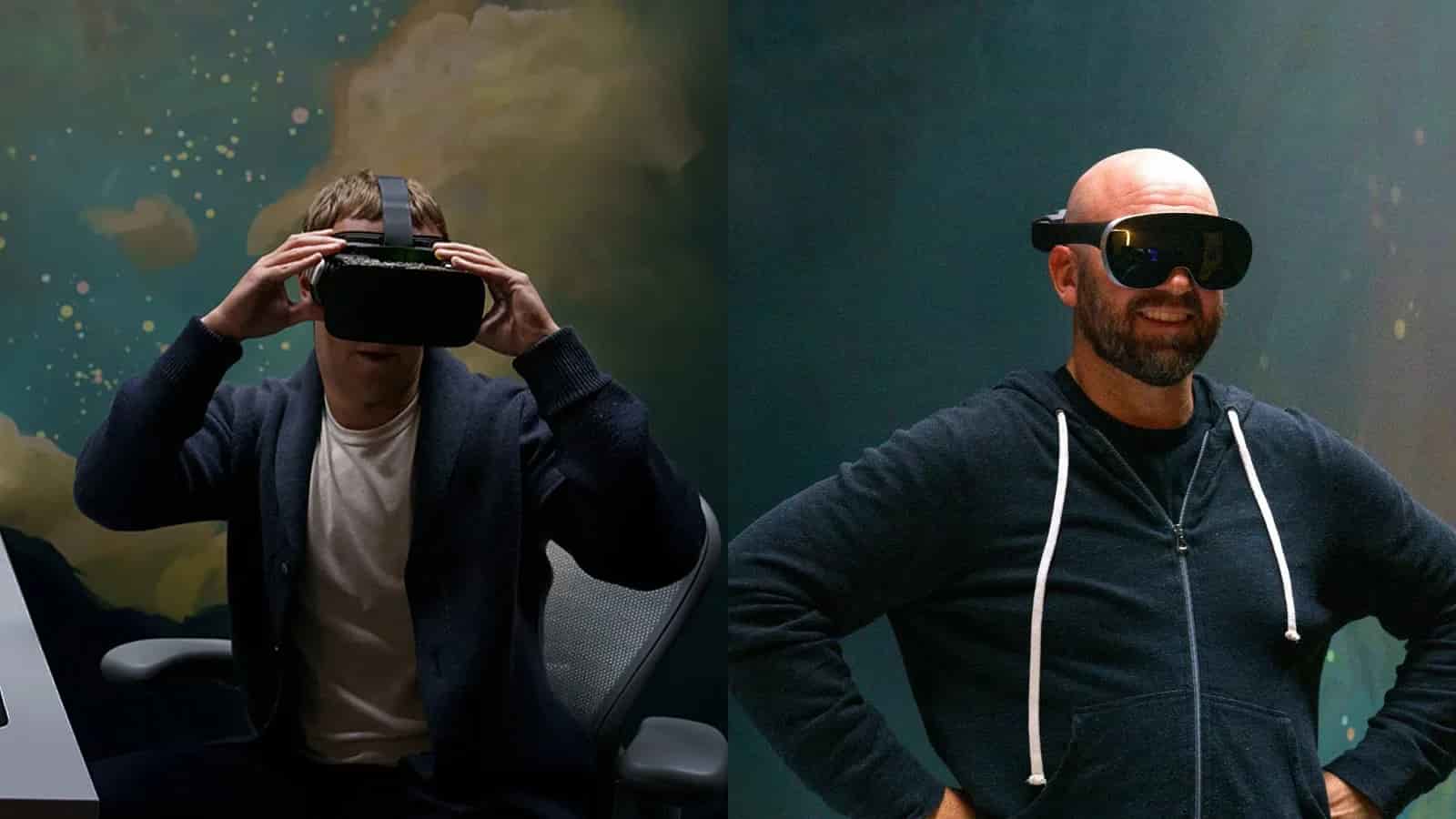Now Reading: Meta Quest 3 Review – All New Version Update (April 2025)
-
01
Meta Quest 3 Review – All New Version Update (April 2025)
Is the Meta Quest 3 really worth the hype?
That’s probably what you’re wondering. With all the buzz around better visuals, mixed reality, and slimmer design, it sounds like Meta just dropped the best standalone VR headset yet. But before you spend your money, let’s get real about what it actually feels like to use.
In this review, I’m breaking down what’s new, what’s better, and what still needs work—from comfort and performance to games and that fancy color passthrough. If you’re thinking about upgrading from the Quest 2 or buying your first headset, this will help you decide if the Meta Quest 3 is the one.
Let’s dive in.
What’s New in Meta Quest 3?
Let’s cut to the chase—what actually makes the Meta Quest 3 different from the Quest 2?
Because if you’re going to shell out more cash, there better be something new and worth it, right?
Here’s the short version: Meta didn’t just tweak the old design—they gave this thing a legit upgrade across the board. And you’ll feel it the second you put it on.
So, what’s changed?
Mixed Reality Just Got Real
You can now see the real world in full color through the headset. That means playing games or using apps that blend virtual objects with your living room. No more blurry black-and-white view like the Quest 2.Sharper, Brighter Visuals
The Quest 3 has higher resolution and better lenses, so everything looks crisper. Text is easier to read, and game environments feel more alive.Slimmer Design, Better Comfort
It’s 40% thinner than the Quest 2. Doesn’t sound like much on paper, but on your face? It’s a big deal. Way less front-heavy.Faster, Smoother Performance
Thanks to a brand-new chip, everything loads quicker. Games run smoother. And multitasking doesn’t make the headset sweat.New Controllers, No More Rings
The Touch Plus controllers ditched the big tracking rings. They’re smaller, sleeker, and still just as accurate. Plus, hand tracking is way better now if you want to ditch the controllers entirely.
All this adds up to one thing:
This isn’t just a slight upgrade—it’s a full step forward. Meta is betting big on mixed reality, and the Quest 3 is built to lead that charge.
Thinking of upgrading?
Hang tight. Let’s see how it actually performs in real use before making the call.
1. Meta Quest v74 Update (Released February 18, 2025):
Web Shortcuts: Introduced the ability to create and access web shortcuts directly from the headset’s interface, streamlining navigation to frequently visited websites.
DisplayPort Output Support: Enabled DisplayPort out functionality, allowing users to connect their Quest 3 to external displays for an enhanced viewing experience.
Additional Enhancements: Included various system optimizations and bug fixes to improve overall performance and stability.
2. Meta Quest v72 Update (Released December 9, 2024):
Seamless Remote Desktop: Integrated a feature that allows users to access and control their desktop computers directly from the Quest 3 headset, enhancing productivity capabilities.
Improved Hand Tracking: Enhanced the responsiveness and accuracy of hand tracking, providing a more immersive and intuitive user experience.
Additional Features: Introduced an in-headset Gallery app for viewing and managing media, along with various system improvements and bug fixes.
3. Meta Quest v71 Update (Released November 4, 2024):
Redesigned Interface: Updated the user interface with redesigned Dark and Light themes, offering a refreshed visual experience.
Travel Mode for Trains: Extended the Travel Mode feature to support train journeys, optimizing the headset’s performance during travel.
New Calendar App: Added a Calendar application with integration for Google and Outlook calendars, allowing users to manage their schedules within the VR environment.
Design and Comfort

First thing you’ll notice? It doesn’t feel like a brick on your face anymore.
That alone is a huge win. The Meta Quest 3 is way slimmer than the Quest 2—about 40% thinner—and that instantly makes it more wearable. You still know it’s there, but it doesn’t press down on your cheeks like before.
So what’s different, really?
The weight is better balanced. The new design spreads it out more evenly, so it’s not all dragging down your forehead. And while the stock strap isn’t perfect (still a soft fabric one), it’s decent for short sessions. If you’re planning longer play or work time, you might still want to grab an upgraded strap.
The padding around the face?
It’s softer and more breathable than before. Less sweat, less pressure, and it fits more head shapes comfortably. And yes—there’s an IPD adjustment slider, so you can actually fine-tune the lens spacing now instead of guessing like before.
Can you wear it for hours?
Short answer: yes, but with breaks. It’s not magic. It’s just better—a lot better—than what we had before.
Bottom line?
You’re not fighting the headset anymore. You’re just enjoying what’s inside it.
Display and Optics

Put this on and the first word that might slip out is: “Whoa.”
The jump in clarity from the Quest 2 to the Quest 3 is instantly noticeable. It’s like wiping a smudgy window clean—everything just pops.
Here’s what’s new:
The Quest 3 uses pancake lenses, which are thinner and offer a clearer image with way less glare than the old Fresnel ones. That means no more distracting rings or weird light streaks when you’re in bright scenes.
The resolution got a solid bump too—not mind-blowingly 4K or anything, but enough that small text looks sharp and you can finally read signs in games without squinting. It’s vibrant, clean, and crisp.
Colors look better. Blacks are deeper.
It’s not OLED-level contrast, but it’s closer than before. If you’ve used a Quest 2, the difference is pretty obvious, especially in darker environments.
And the field of view?
Wider. You feel more in the world, less like you’re peeking through binoculars.
Why does all this matter?
Because visuals make or break immersion. If the display sucks, the magic is gone. But with the Quest 3, you get visuals that actually pull you in and keep you there.
In short: It’s not just sharper—it’s more comfortable on the eyes too.
Performance

No one likes lag in VR. Period.
It kills the vibe, breaks immersion, and sometimes even makes you queasy. Thankfully, the Meta Quest 3 doesn’t mess around when it comes to power.
So, what’s under the hood?
A brand-new Snapdragon XR2 Gen 2 chip, and yes—you can feel the difference. Apps launch faster, environments load quicker, and everything just feels smoother. Compared to the Quest 2, it’s like upgrading from a decent laptop to a gaming PC.
Multitasking?
You can have multiple apps open without the headset freaking out. Switching between games, your browser, and mixed reality tools actually works now without noticeable stutter.
And gameplay?
Frame rates are more consistent, which matters way more than you think—especially in fast-paced games like Beat Saberor Population: One. Fewer dips = better flow.
Battery life though?
It’s decent, not mind-blowing. You’re looking at roughly 2–2.5 hours on a full charge depending on what you’re doing. Not worse than the Quest 2, but not better either. So yeah, keep that charger handy.
TL;DR:
This is the fastest, smoothest standalone headset Meta has ever made. It’s not trying to be a console—it is the console.
Controllers and Hand Tracking
First thing you’ll notice: the rings are gone.
And honestly? You won’t miss them.
The Meta Quest 3’s Touch Plus controllers are smaller, lighter, and just feel better in your hands. They’ve ditched the big tracking rings from the Quest 2, but tracking is still super accurate—thanks to smarter sensors in the headset itself.
What’s it like in action?
Movements are fast and precise. Whether you’re slicing through blocks in Beat Saber or aiming a blaster in Superhot, the controls respond instantly. The vibration feedback (aka haptics) has been slightly upgraded too—it’s subtle but adds a nice layer of feel.
Now about hand tracking…
It’s actually usable now. You can put the controllers down and use just your hands to navigate menus, scroll, tap, grab—you name it. It’s not perfect yet, but it’s no longer a gimmick. For casual apps, media browsing, or mixed reality experiences, hand tracking feels natural and kind of futuristic.
Why does this matter?
Because fewer accessories and better tracking = more freedom. The headset just works how you expect it to. No fussing with setup, no recalibrating every two minutes.
In short:
Meta didn’t just shrink the controllers—they made them smarter. And for the first time, using your bare hands in VR actually makes sense.
Game and App Library

Let’s be honest—cool hardware means nothing without great stuff to do in it.
Luckily, the Meta Quest 3 doesn’t leave you hanging. From day one, you’ve got access to hundreds of VR games and apps—and yes, most of your Quest 2 favorites are still here and run even better.
So what’s the library actually like?
It’s stacked. You’ve got top-tier games like Beat Saber, Superhot VR, Resident Evil 4 VR, Among Us VR, and The Walking Dead: Saints & Sinners. These all look sharper and run smoother on the Quest 3. And many developers are already rolling out updates to take advantage of the new hardware.
Mixed reality content?
This is where things are getting interesting. There are new MR games and apps popping up that let you blend virtual objects into your actual space. Think digital pets running around your living room or virtual board games on your coffee table. It’s still early days, but the potential is huge.
And yes—PC VR is still in the picture.
You can hook it up to a gaming PC using a USB-C cable or wirelessly through Air Link. That means access to even bigger titles on SteamVR like Half-Life: Alyx or Boneworks—if you’ve got the setup for it.
In short:
There’s plenty to play and explore. Whether you’re into fast-paced games, fitness, creativity, or just chilling in virtual worlds, the Quest 3 has something for you.
Software and Ecosystem

A powerful headset is great—but how easy is it to actually use?
That’s where the Meta Quest 3’s software really steps up. It’s smooth, simple, and actually kind of fun to use—even when you’re not gaming.
So, what’s it like day-to-day?
The interface is clean and snappy. You boot it up, and you’re in your home space in seconds. Navigating through your library, store, or settings feels more like using a modern smartphone than a clunky headset menu.
Meta’s store?
Packed with content, from top-rated games to productivity tools and creative apps. And it’s easy to search, preview, and install directly from the headset. You’ll also find frequent updates, sales, and recommendations based on what you play.
Social stuff is built-in, too.
You can create your avatar, jump into party chat, hang out in Horizon Worlds, or just send invites to friends straight from your headset. It’s all optional, but if you’re into that kind of thing, it’s super easy to stay connected.
Parental controls and safety?
Surprisingly solid. You can set screen time limits, approve app downloads, and keep an eye on what your kid is doing—without needing a degree in tech.
Why does this matter?
Because a great VR experience isn’t just about graphics. It’s about how fast you can jump into it, how well it works when you’re in it, and how easily you can come back for more.
Bottom line:
The Meta Quest 3 isn’t just a headset—it’s part of a growing ecosystem that’s built for both play and productivity, and it actually makes you want to stick around.
Price and Value

Let’s talk money.
The Meta Quest 3 starts at $499, and yeah—that’s a noticeable jump from the Quest 2’s $299 launch price. So the real question is: are you getting enough bang for your buck?
Short answer? You are—but it depends on what you want out of VR.
You’re getting:
A way better display
A faster chip
Mixed reality features
Sleeker design
And a massive game library right out of the box
It’s not just a slight upgrade—it’s a whole new tier. Compared to high-end PC VR setups (which often cost $1000+ with a computer), the Quest 3 holds its own without needing anything else. No cables. No base stations. No extra hardware.
But here’s the catch: accessories add up.
Want a better strap? That’s extra. A charging dock? Extra. More storage? You’ll pay more for the 512GB version. So yeah, keep that in mind.
Still, if you’re serious about getting into VR—or upgrading from the Quest 2—it’s worth the investment. You’re not just buying a headset. You’re buying an all-in-one VR and MR experience that’s portable, powerful, and future-ready.
Bottom line:
It’s not cheap. But for what it offers, the Quest 3 hits a sweet spot between price and performance that most headsets just can’t touch.
Pros and Cons
Still on the fence?
Let’s lay it out clearly—what’s great about the Meta Quest 3, and what might give you pause.
Here’s the no-nonsense breakdown:
| Pros | Cons |
|---|---|
| Crisp, sharp visuals | Higher starting price than Quest 2 |
| Full-color mixed reality passthrough | Battery life is just okay (2–2.5 hrs) |
| Slimmer, more comfortable design | Fabric strap isn’t ideal for long play |
| Faster performance, smoother games | Accessories cost extra |
| Great hand tracking and new controllers | Still slightly bulky for some users |
| Massive game + app library | Mixed reality content still growing |
| Works standalone and with PC VR | No OLED display (but still looks great) |
So what’s the takeaway?
If you’re looking for the best all-in-one VR headset right now, the Quest 3 delivers where it counts. But it’s not perfect—and it’s not the cheapest. Knowing these trade-offs helps you decide if it fits your vibe and budget.
Who Should Buy the Meta Quest 3?
Not every headset is for everyone—and that’s okay.
So let’s figure out if the Meta Quest 3 fits you. Because while it’s packed with cool stuff, it really shines for certain types of users.
You’ll love the Quest 3 if you’re:
A VR Gamer
You want sharp visuals, smoother gameplay, and access to hundreds of top-tier titles. This is your upgrade. Everything feels faster, looks better, and plays great—whether you’re slicing, shooting, or exploring.Curious About Mixed Reality
Want to see digital stuff pop up in your real world? The Quest 3 is your gateway. With full-color passthrough and growing MR apps, you’re stepping into the future—without spending a fortune.A First-Time Buyer Ready to Dive In
If this is your first VR headset and you want a premium experience that’s easy to set up, play, and enjoy—this is it. No wires. No PC required. Just strap in and go.A Fitness Fan
Into VR workouts like Supernatural or FitXR? The lighter design, better tracking, and faster loading make the Quest 3 feel built for movement.A Creator or Developer
If you’re building VR or MR content, this gives you power, precision, and a growing audience—plus, you can test across both immersive and mixed reality modes.
Maybe hold off if:
You’re super budget-conscious, already happy with your Quest 2, or mainly want it for passive media watching. The upgrades are awesome, but they might not be essential for everyone.
Bottom line:
If you want the best all-in-one VR headset right now—and you’re ready to go beyond just “dipping your toes”—the Meta Quest 3 is built for you.
Final Verdict
So, is the Meta Quest 3 worth it?
If you’re after the most well-rounded, future-proof standalone VR headset right now—the answer is a confident yes.
Here’s the deal:
The Meta Quest 3 isn’t just a slight upgrade—it’s a full-on level-up. You’re getting sharper visuals, faster performance, solid mixed reality, and a huge library of games and apps. It’s comfortable, powerful, and finally makes hand tracking and MR actually usable.
Is it perfect? Nope. The battery could be better. The accessories add up. And if you’re already on a Quest 2, you’ll have to decide if the upgrades are big enough for your needs.
But if you’re jumping into VR for the first time—or want the best standalone experience available today—this is the headset to beat.
Final score?
Let’s just say this: the Meta Quest 3 doesn’t just live up to the hype—it earns it.
FAQs
Still have questions? You’re not alone.
Here are some quick, straight answers to the stuff most people want to know about the Meta Quest 3:
Q: Can I play Quest 2 games on the Quest 3?
A: Yep, totally. Everything you bought or played on the Quest 2 carries over. Most games even look better on the Quest 3.
Q: How long does the battery last?
A: Around 2 to 2.5 hours, depending on what you’re doing. Gaming eats it faster than just watching videos.
Q: Does it work with SteamVR and PC games?
A: Yes! You can connect via USB-C cable or go wireless with Air Link to play PC VR titles like Half-Life: Alyx.
Q: Can I use it without controllers?
A: You can. The Quest 3 has solid hand tracking, so you can navigate menus, use certain apps, and even play some games with just your hands.
Q: Is it comfortable with glasses?
A: It’s better than before, but still tight for bigger frames. You might want a glasses spacer or, better yet, get lens inserts made for VR.
Q: Is the Meta Quest 3 good for kids?
A: Meta recommends it for ages 13 and up. There are parental controls, but it’s still best to monitor usage closely.
Got more questions?
Drop them in the comments—or just try one out. Sometimes, VR makes more sense when you’re actually in it.
Related Posts
AR1 month ago
When Does The Meta Quest 4 Come Out
AR1 month ago
Top 5 meta quest gun controller
AR1 month ago
Top Rated Meta Quest 3 Skins
Previous Post
Next Post
Recent Posts
- vision pro updates 2025: Latest visionOS Features, App News & More
- Dopple’s Loop: Etsy Co-founder’s Bold Entry into XR with a Wearable Spatial Device
- Apple May Bring Controller Support to Vision Pro: A Game-Changer for Immersive VR
- Slime Lab VR: Liquid Physics Playground for Quest 3 & SteamVR
- Top 5 meta quest gun controller


